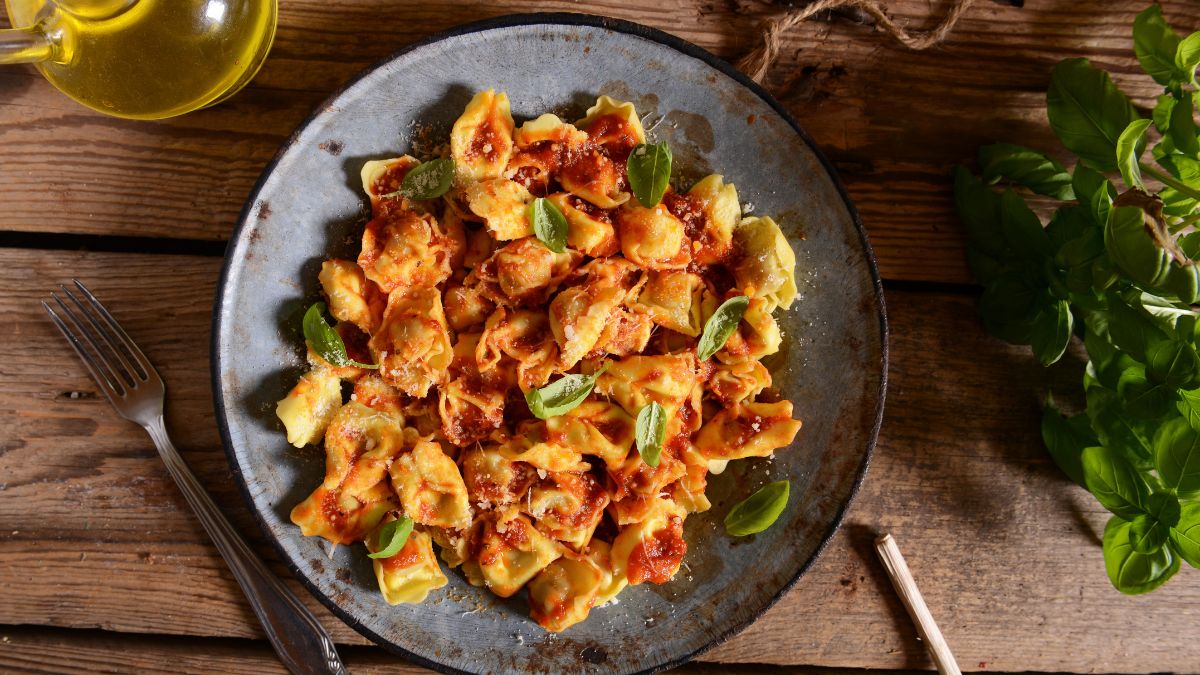Introduction: Ravioli
One Italian delicacy that has won the hearts and stomachs of diners everywhere is ravioli. These delicious pasta pockets have a long history and a wide range of flavors thanks to the many different fillings and sauces that can be used to prepare them. In this article, we’ll take you on a tour of ravioli, from its Italian roots to the many fillings and sauces that go with it to helpful hints on how to savor every bite.
The Origins of Ravioli
A Taste of History
Aristocrats in ancient Rome were the first known consumers of filled pasta like this. But it wasn’t until the Middle Ages when this pasta, in its modern form, really caught on with the public. These pasta pockets were a mainstay in Italian kitchens since they could be used in a variety of ways and were simple to prepare.
Crafting the Perfect Ravioli
Homemade Delights
The process of making homemade pasta may be enjoyable. Fresh pasta dough may be made using flour, eggs, salt, and a touch of olive oil. After rolling out the dough, you can divide it into rectangles or circles. The dough must be thin enough to contain the filling without being too fragile.
The Art of Filling
The contents for pasta can range from the traditional ricotta and spinach to the extravagant lobster and truffle. You may get as creative as you like with the fillings, but make sure they have a good balance of flavors. Ravioli may be elevated to gourmet status with the addition of cheese, herbs, and other seasonings.
Sealing the Deal
Spoon some filling onto one piece of spaghetti, then carefully top it with another, pushing down to seal the contents within. This is a tricky part of making ravioli so that they don’t explode in the oven.
Sauces That Shine
Classic Pairings
There is a wide variety of sauces that go well with ravioli. Sauces like marinara, Alfredo, and pesto are the classic choices. Your filling and taste preferences should guide your decision for the best sauce to complement your meal.
Unique Combinations
Try using nonstandard sauce combinations for a fun spin on the classics. A sage brown butter sauce works well with pumpkin pasta, while a lemon cream sauce brings out the best in seafood pasta.
Savoring Every Bite
It requires careful handling during cooking. Fresh ravioli needs between two and four minutes in the boiling water before it floats to the top. Pasta can become overcooked and mushy if not monitored.
Presentation Matters
A platter of perfectly arranged ravioli is a visual treat. Add some aesthetic appeal by garnishing with fresh herbs, Parmesan cheese, or olive oil.
Conclusion
Ravioli is an Italian classic that has stood the test of time and provides countless variations. Ravioli is a pasta lover’s dream for many reasons, including its delicious flavor, artful preparation, and a wide variety of fillings and sauces. It’s a unique experience to taste every meal, whether you stick to tried-and-true recipes or try out some new combinations.
FAQs
1. What is the origin of ravioli?
Although its origins may be traced back to ancient Rome, the dish really took off in Italy during the Middle Ages.
2. Can I make this pasta at home?
Absolutely! Cooking homemade ravioli may be an exciting and satisfying experience.
3. What are some unique ravioli fillings to try?
For a more upscale take on classic pasta try filling them with lobster and truffle.
4. What’s the secret to perfect ravioli?
Fillings that are well-seasoned and pasta that is not overcooked are the keys to making great ravioli.
5. Are there vegetarian options for ravioli?
The contents of many vegetarian raviolis, such ricotta and spinach, are tasty and filling.









